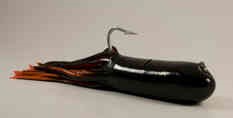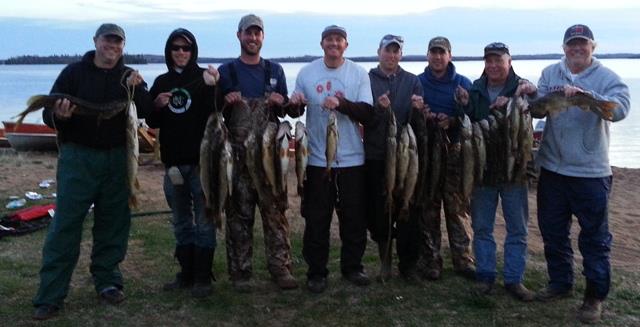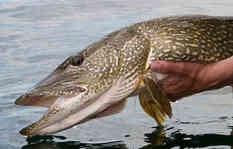|
There are few a shorter days and cooling water are signals to northern pike that autumn has arrived. During fall, these sleek predators will feed heartily to pack on energy reserves to help them etter ways to catch pike in cold water than using big profile jigs, and giant tubes are particularly productive baits. Pike Locations From Early Fall To Ice Up  An autumn-sized bait. Pictured here is WaterWolf Lures’s 7-inch Gator Tube with a 9/0, 1-ounce jig head. Basic Tube Jigs Tips When fishing tubes near the bottom, be alert and keep a feel on the bait at all times as it sinks. Tubes fall in a shimmy or a spiral that imitates a dying fish and pike often strike during the initial drop. Once on the bottom, you can use either a lazy, lift-drop swim or a drag-pause retrieve. Hooking Followers Fall fish can be lazy and follows are common. The best scenario is spotting an aggressive fish a distance from the boat. In this case, try speeding up the retrieve or adding some snaps. This imitates escape-moves and sometimes triggers bites. If the fish appears lazy, slow the retrieve slightly. If working the bait along the bottom, add pauses or experiment with the length of drags. Slow twitches that impart an escape-like dart to tubes can also evoke strikes. If you spot a following pike close to the boat while your jig is traveling upwards, letting out line so the jig falls is your best option. Tackle useTips Rig tube jigs using a long-shank jig head. Large baits featuring a wide body cavity will accommodate a range of jig-head styles. Also, adding a stinger treble hook on a wire leader to large 7-inch tubes can help with hook-up rates when pike bite short.
This autumn try casting tube jigs around deep weed edges and rocky structures. This non-traditional tactic is a great way to boat bragging-size northern pike. CHECK OUT OUR HUNTING BLOG: ON TARGET |







